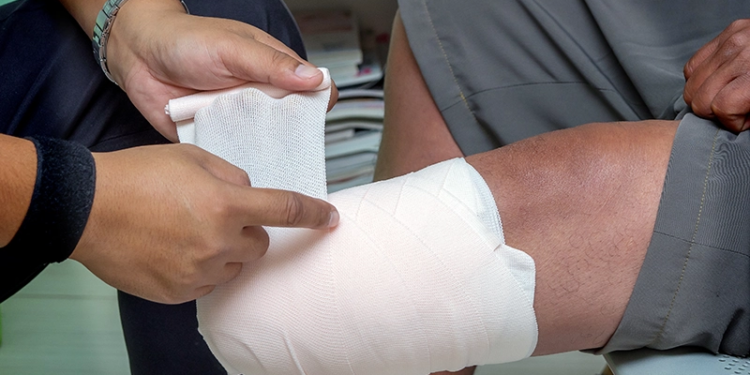Many research groups are working on potential solutions to create a more fluent man-machine interface to provide better control of prosthetic limbs. For the first time, a team from the Medical University of Vienna Department of Surgery, Austria, working with commercial partner Ottobock Healthcare Products, Duderstadt, Germany, and the Alfred Mann Foundation, has successfully used implantable myoelectric sensor (IMES) system sensors in three patients following targeted muscle reinnervation (TMR) to transmit biosignals for wireless control of prosthetic arms. The prospective interventional study, published in Science Robotics, reports the long-term (2.5 years) results. According to the authors, the study demonstrated the clinical viability of chronically implanted myoelectric interfaces that amplify nerve activity through TMR for upper-limb prosthetic users.
TMR amplifies the electrical activity of nerves at the residual limbs by redirecting them in remnant muscles above the amputation. The electrical activity of the reinnervated muscles can be used to extract natural control signals. IMES are cylindrical implants, 16mm long and 2.5mm in diameter, with metal end caps acting as electrodes for recording intramuscular EMG. The increased number of EMG sites achieved by TMR surgery using selective nerve transfers enables prosthetic control in a more intuitive manner than with naturally innervated muscles alone. The IMES wirelessly transmit EMG data to the prosthesis and are powered by inductive coupling using an external coil integrated into the prosthetic socket.
The patients, three men with unilateral transhumeral amputations, showed substantial functional improvements using the implanted system compared with control based on surface electrodes. At the last follow-up visit at 3, 2.75, and 2.5 years postoperatively, all IMES showed reliable communication. In addition, no events of disconnection between the sensors and the prosthetic device were reported by the patients or were identified during functional assessments.
In the three patients, implantation of the IMES combined with TMR surgery was performed 1.03 ± 0.50 years after the amputation. For the surgery, a standard nerve transfer matrix was used. Depending on the number of available target muscles, five to six IMES were used.
“After more than two years of observation, the results demonstrate extremely reliable data transmission and much quicker and safer use in comparison with standard systems,” said principal investigator Oskar Aszmann, MD.
“These patients had had above-elbow amputations as a result of occupational or road accidents. In such cases, they not only have to have the hand and the wrist replaced by a myoelectric prosthesis, but the elbow as well. The implanted sensors transmit the muscle signal wirelessly from the amputation stump to the prosthesis and are similarly wirelessly charged by a magnetic coil in the shaft of the prosthesis,” said study author Stefan Salminger. MD, PhD.
In combination with selective extension of the nerves that were responsible for hand and arm function before the amputation, the patients were able to control their prostheses intuitively. The research team believes the technology could make a significant improvement in muscle signal quality, in particular, and, above all in the reliability of prosthetic control.
Editor’s note: This story was adapted from materials provided by the Medical University of Vienna.




